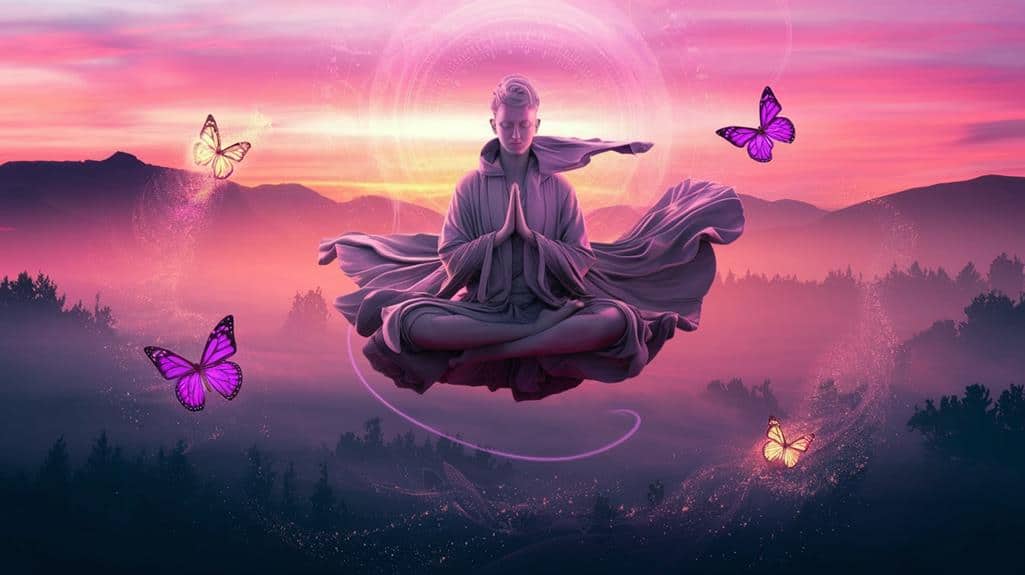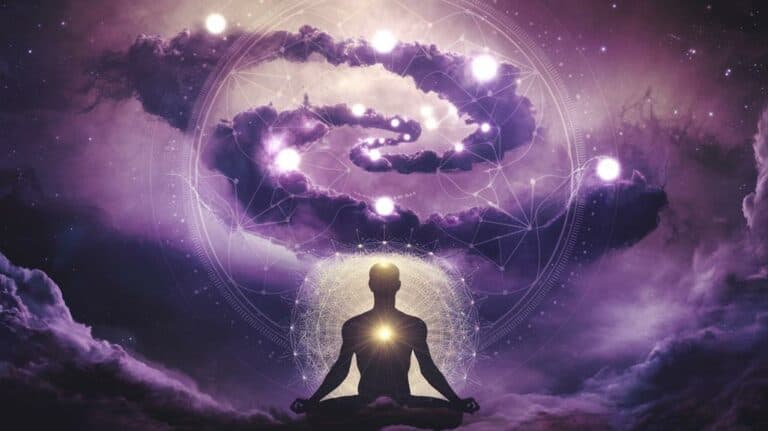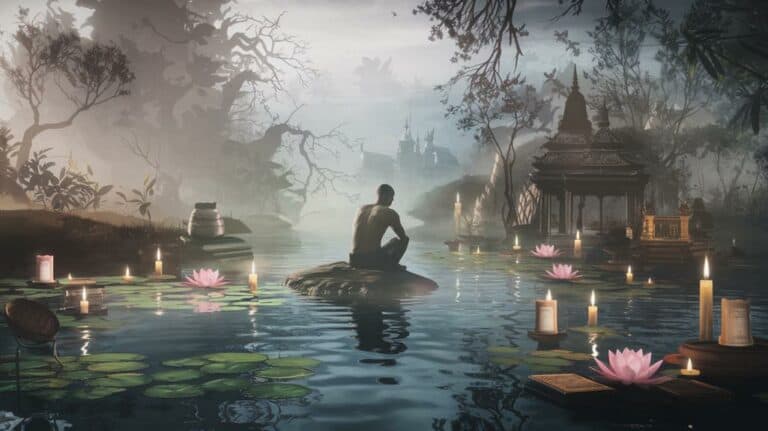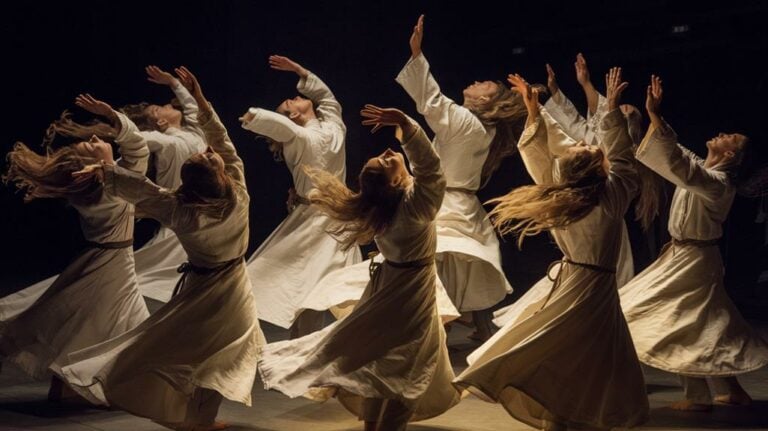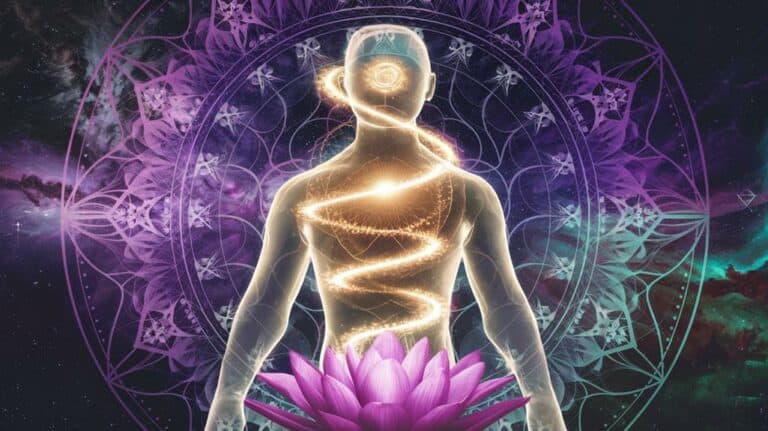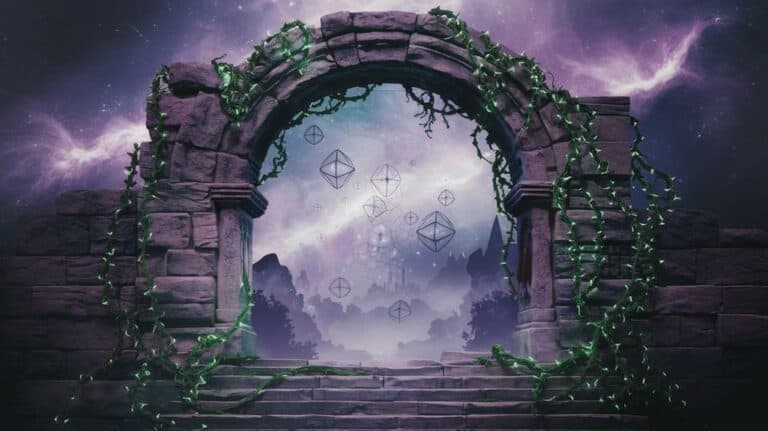What Is Mysticism in Poetry?
You’ll find that mysticism in poetry isn’t just about spiritual revelations—it’s an artful dance between what can and cannot be expressed in ordinary language. When poets venture into mystical territory, they’re attempting to capture those elusive moments where the mundane transforms into the divine, where a simple dewdrop might contain the universe’s secrets. Through carefully chosen metaphors and rhythmic cadences, mystic verse weaves together earthly experiences with transcendent truths, creating a bridge between the tangible and ineffable. As you explore this rich tradition, you’ll discover how the greatest mystical poets have transformed their glimpses of the infinite into words that continue to resonate across centuries.
Origins of Mystical Poetry
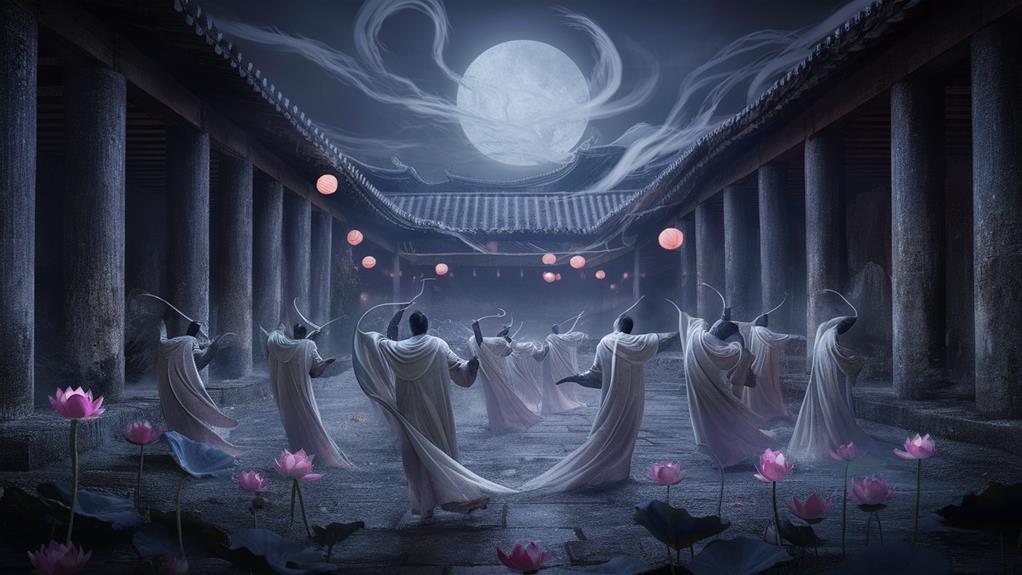
Many ancient civilizations gave birth to mystical poetry, with the earliest examples dating back to Mesopotamian hymns and Egyptian spiritual verses from around 2000 BCE. You’ll find these sacred texts filled with profound metaphors and vivid imagery that sought to bridge the gap between the earthly and divine domains, speaking directly to humanity’s deepest spiritual longings.
As you explore deeper into history, you’ll discover how mystical poetry evolved through various cultural traditions. In India, the Vedic hymns emerged as intricate expressions of cosmic consciousness, while Persian Sufi poets like Rumi and Hafez would later craft verses that danced between divine love and human experience.
You’ll notice how these early mystic poets didn’t just write about spirituality—they created transformative experiences through their words.
The tradition hasn’t remained static; it’s flowed like a river through time, picking up new currents while maintaining its essential nature. You can trace how Greek Orphic hymns, Hebrew psalms, and Chinese Taoist verses all contributed their unique perspectives to this ancient art form, each adding distinctive layers to mystical poetry’s rich tapestry.
Common Mystical Themes and Symbols
The heart of mystical poetry beats with certain universal symbols and themes that transcend cultural boundaries. You’ll find recurring motifs of light piercing darkness, the soul’s journey toward union with the divine, and the transformative power of love that burns away the ego’s illusions. These elements aren’t mere poetic devices – they’re gateways to deeper truths that you’re invited to explore.
In mystical verse, you’ll encounter symbols that speak directly to your innermost being: the moth drawn to flame represents your soul’s yearning for divine union, while gardens symbolize the cultivated spiritual life you’re nurturing.
The ocean represents the vast consciousness you’re capable of accessing, and mountains stand for the challenges you’ll face on your spiritual ascent. Birds often appear as messengers between earthly and divine domains, while wine symbolizes spiritual intoxication that liberates you from mundane awareness.
You’ll notice how mystic poets weave these symbols into expressions of longing, separation, and ultimate reunion with the beloved – whether that’s understood as God, ultimate reality, or your own higher self.
Language of the Ineffable
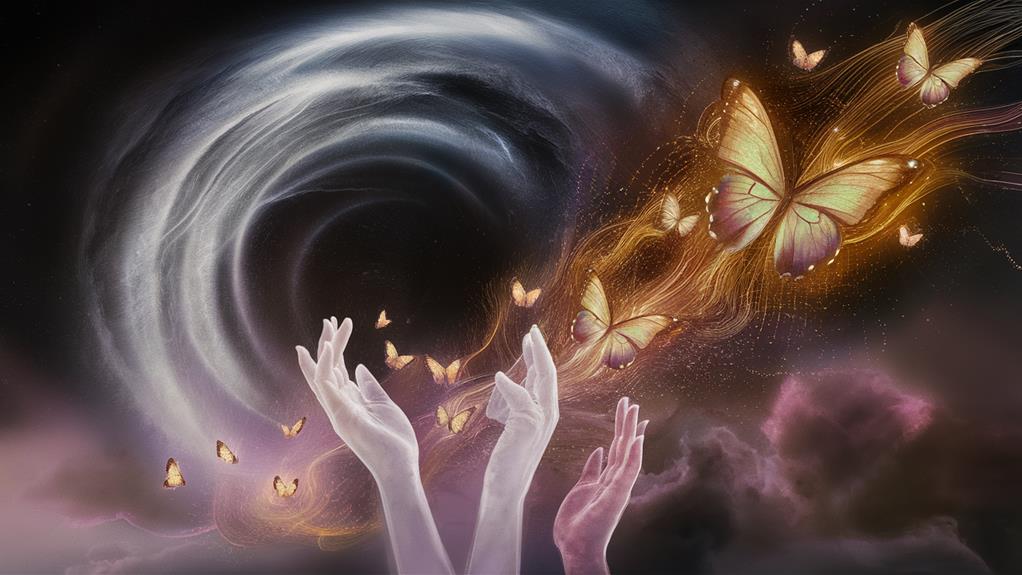
Mystical poets face a fundamental paradox when attempting to capture divine experiences through human language. You’ll notice how they strain against the limitations of words, reaching for metaphors and imagery that might bridge the gap between earthly expression and transcendent truth.
When you encounter their work, you’re witnessing their struggle to articulate what lies beyond ordinary perception. To convey the ineffable, you’ll find these poets employing various linguistic strategies. They’ll often layer paradox upon paradox, using contradictions to point toward truths that defy linear logic.
You’ll see them break conventional grammar, stretch syntax, and forge new compounds of words. In their hands, silence becomes as meaningful as sound, and spaces between words carry as much weight as the words themselves.
When you explore mystical poetry, you’re not just reading about divine experience—you’re participating in it. Through their carefully crafted language, these poets create linguistic portals that invite you to step beyond rational thought.
They’re offering you not just descriptions of mystical encounters but actual pathways to transcendent awareness.
Major Mystical Poets
Throughout history, influential mystical poets have emerged from diverse spiritual traditions, each bringing unique perspectives to transcendent experiences.
You’ll discover Rumi’s ecstatic verses whirling with divine love, while San Juan de la Cruz’s dark night of the soul will guide you through spiritual transformation‘s deepest valleys. These poets don’t just write about the sacred – they embody it.
When you explore William Blake’s visionary works, you’ll encounter angels in trees and eternity in grains of sand, while Emily Dickinson’s precise yet profound verses will show you immortality “stopping for tea.”
You’ll find that Kabir weaves Hindu and Islamic mysticism into deceptively simple poems that challenge your spiritual assumptions, while Mirabai’s devotional songs express divine passion that transcends conventional boundaries.
In contemporary times, you’ll recognize Mary Oliver’s nature mysticism that finds the sacred in wild geese and morning ponds, while Wendell Berry’s contemplative verses reveal divinity in the soil beneath your feet.
These poets offer you pathways to transcendence through their unique voices, each illuminating different aspects of the ineffable mystery they’ve encountered.
Techniques for Transcendent Expression
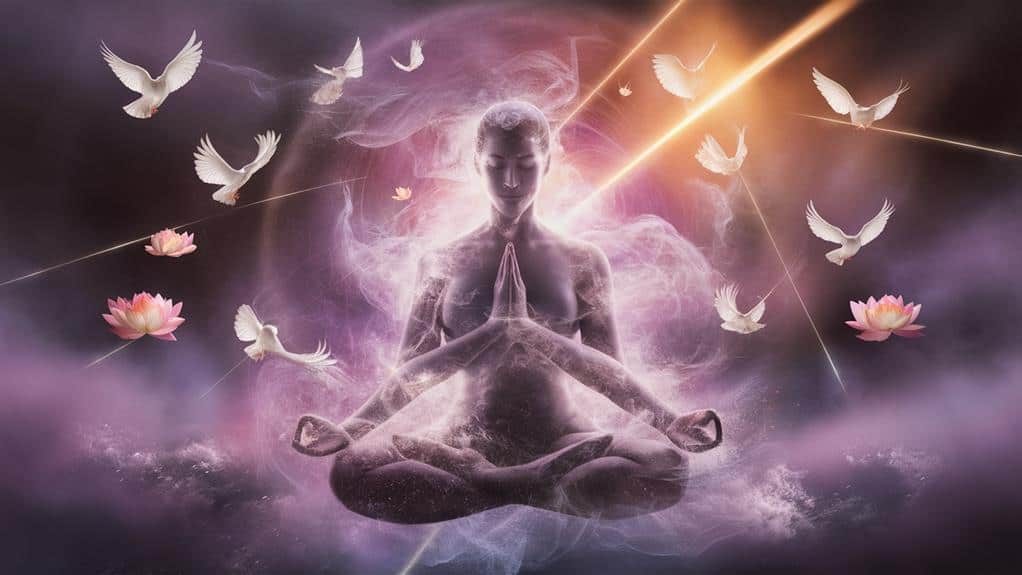
Poets employing mystical expression rely on specific techniques to convey ineffable experiences through language. You’ll find they often use paradox and contradiction to push beyond logical constraints, allowing you to glimpse what lies beyond ordinary perception.
Through carefully crafted metaphors and symbols, they’ll guide you toward transcendent insights that can’t be expressed directly.
When you’re exploring mystical poetry, you’ll notice how writers weave repetition and incantatory rhythms to induce trance-like states, breaking down your usual patterns of thought.
They’ll draw you in through sensory details that shift between physical and spiritual planes, creating bridges between the tangible and the divine.
You’ll encounter deliberately fragmented syntax and unconventional imagery that force you to abandon traditional meaning-making.
The techniques you’ll discover include strategic use of silence and white space, allowing mystery to resonate in the gaps between words.
You’ll find yourself transported through sudden shifts in perspective, as poets alternate between intimate personal experience and cosmic awareness.
These methods don’t just describe transcendent moments – they create pathways for you to experience them directly.
Cultural Influences on Mystic Verse
Religious and philosophical traditions shape up the distinct flavors of mystic verse across different cultures.
You’ll find that Eastern mysticism, with its emphasis on emptiness and non-dualism, produces poetry that dissolves the boundaries between self and universe. In Sanskrit verses, you’re often guided through states of consciousness that transcend ordinary perception, while Sufi poetry draws you into the intoxicating metaphors of divine love and spiritual wine.
When you explore Western mystical traditions, you’ll encounter Christian contemplatives who weave biblical imagery with personal revelation, creating verses that bridge heaven and earth.
The Celtic mystic tradition infuses nature with spiritual significance, where you’re invited to find divinity in every leaf and stone. You’ll notice how Jewish Kabbalistic poetry employs the power of sacred letters and hidden meanings, transforming ordinary words into vessels of divine light.
These cultural threads don’t exist in isolation – they’re constantly interweaving and evolving.
You’re part of this living tradition whenever you read or write mystic verse, drawing from ancient wells while adding your own unique perspective to this timeless conversation between human consciousness and the infinite.
Modern Mystical Poetry
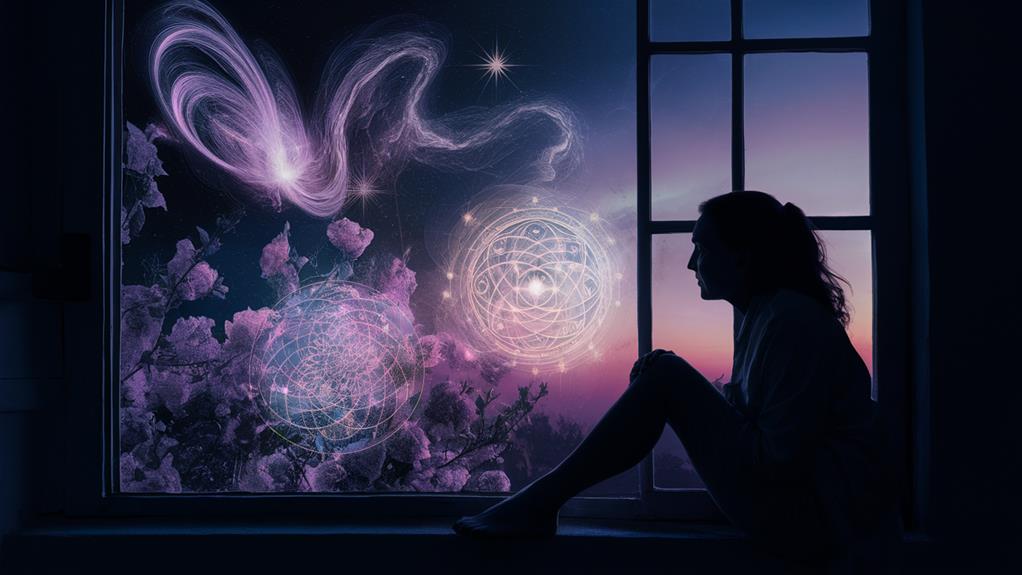
Contemporary mystical poetry has evolved beyond traditional religious boundaries, embracing diverse spiritual experiences and modern consciousness.
You’ll find today’s mystic poets drawing inspiration from quantum physics, environmental awareness, and digital interconnectedness, weaving these elements into their spiritual explorations.
In modern mystical verse, you’re invited to discover how poets transform ordinary moments into transcendent experiences.
You’ll notice they’re breaking free from conventional religious imagery, instead creating their own sacred symbols from urban landscapes, technology, and the collective human experience.
When you read poets like Jane Hirshfield or Mary Oliver, you’ll see how they’ve crafted a new mystical language that speaks to your contemporary spiritual hunger.
You’re living in an age where mystical poetry doesn’t require you to follow specific doctrines or beliefs.
Instead, it’s guiding you to find the extraordinary within your everyday existence.
Through free verse and experimental forms, modern mystic poets are helping you bridge the gap between ancient wisdom and your present reality, showing how spirituality continues to evolve alongside human consciousness.
Writing Your Own Mystical Poems
Building on the rich traditions of modern mystical verse, you can begin creating your own spiritual poetry by opening yourself to moments of wonder in daily life.
You’ll find that mystical insights often emerge when you’re fully present, whether you’re watching sunlight filter through leaves or experiencing profound silence in meditation. Let your observations flow naturally onto the page, trusting your intuitive connection to the ineffable.
As you develop your mystical voice, you’ll want to draw upon metaphors that bridge the physical and spiritual domains.
Consider how ordinary objects – a cup, a stone, a shadow – might reveal deeper truths about existence. Don’t shy away from paradox; mystical poetry often dwells in the space between opposing ideas, where conventional logic gives way to deeper understanding. You might explore the tension between unity and separation, stillness and movement, or presence and absence.
Remember that revision plays a vital role in mystical poetry.
While your initial drafts may capture raw spiritual insights, careful editing helps distill these experiences into their purest form, allowing readers to share in your moments of transcendence.
Conclusion
You’re now equipped to explore mystical poetry‘s transformative power in your own journey. Whether you’re reading ancient Sufi verses or crafting your own spiritual expressions, you’ll find that mystical poetry opens doorways to deeper understanding. Let the language of transcendence guide you as you weave your experiences into verse, knowing that you’re participating in humanity’s timeless quest to capture glimpses of the divine through words.



